Windows Firewall is a great feature in modern Windows versions. It was introduced in Windows XP and improved in Windows XP Service Pack 2. For testing purposes, you might want to disable Windows Firewall. For example, if you want to ensure that you have not misconfigured it and it is isn't blocking some important app that you are trying to use, then disabling it becomes important. Here is how to disable Windows Firewall in Windows 10.
Advertisеment
In Windows 10, Windows Firewall is based completely on the Windows Filtering Platform API and has IPsec integrated with it. This is true since Windows Vista where the firewall added outbound connection blocking and also comes with an advanced Control Panel called Windows Firewall with Advanced Security. It gives fine-grained control over configuring the firewall. The Windows Firewall supports multiple active profiles, co-existence with third-party firewalls, and rules based on port ranges and protocols. You can use the built-in Windows Firewall to block telemetry and updates in Windows 10.
If you need to turn it off temporarily or permanently, here is how. It is a good idea to backup your Firewall rules before you continue.
Table of contents.
To disable Firewall in Windows 10, do the following.
Starting with Windows 10 Creators Update, Windows Defender Security Center can be used to disable Windows Firewall quickly.
- Open it as described in the article: Windows Defender Security Center in Windows 10 Creators Update. Alternatively, you can create a special shortcut to open it.
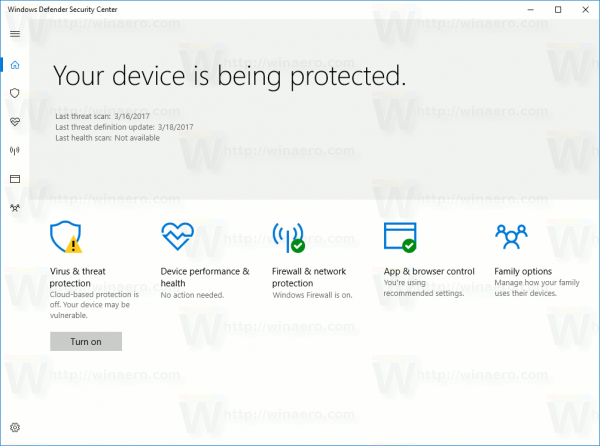
- In the user interface of Windows Defender Security Center, click the icon Firewall & network protection.
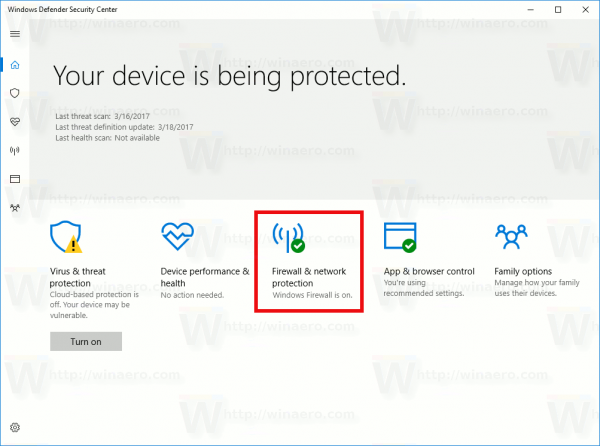
- The following page will be opened.
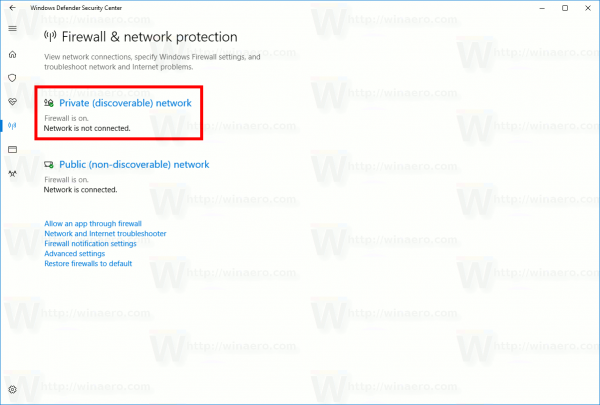 Click on the link Private (discoverable) network or Public (non-discoverable) network to disable the firewall for the selected type of network.
Click on the link Private (discoverable) network or Public (non-discoverable) network to disable the firewall for the selected type of network. - On the next page, disable the option Windows Firewall. When disabled, Windows Firewall won't block apps running in Windows 10. It will be turned off.
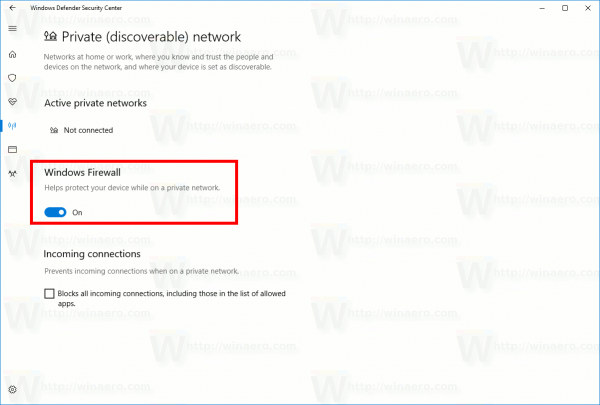
- A UAC confirmation prompt will appear. Click Yes to confirm the operation.
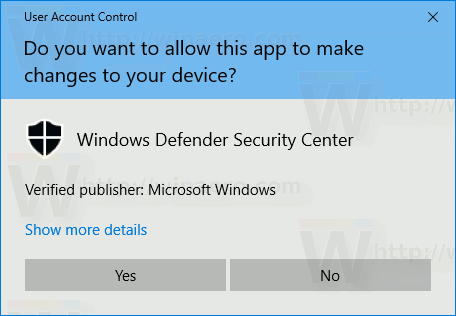
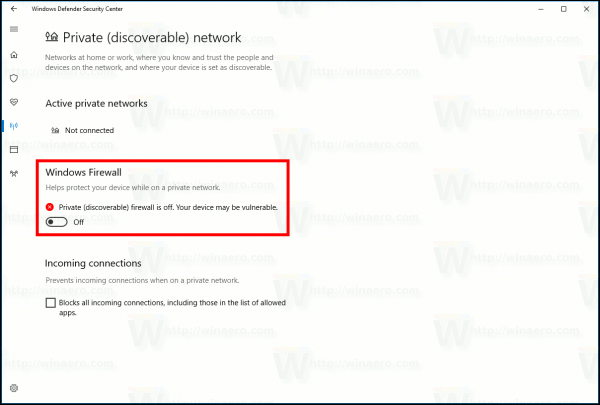
Having Windows Firewall disabled is a security risk. I do not recommend that you keep it disabled permanently. Perform all the required checks and tests and turn it on using the same option.
You can disable Windows Firewall in Control Panel.
Windows Defender Security Center is a new feature of Windows 10 Creators Update. If you are running a previous release of Windows 10 (for example, if you have postponed Windows 10 Creators Update for a while), then you need to do the following to disable the firewall.
- Open Control Panel.
- Go to the following path:
Control Panel\System and Security\Windows Firewall
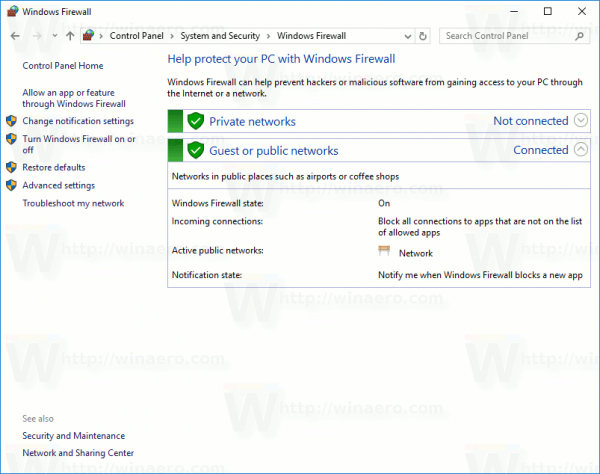
- Click the link Turn Windows Firewall on or off in the left pane.
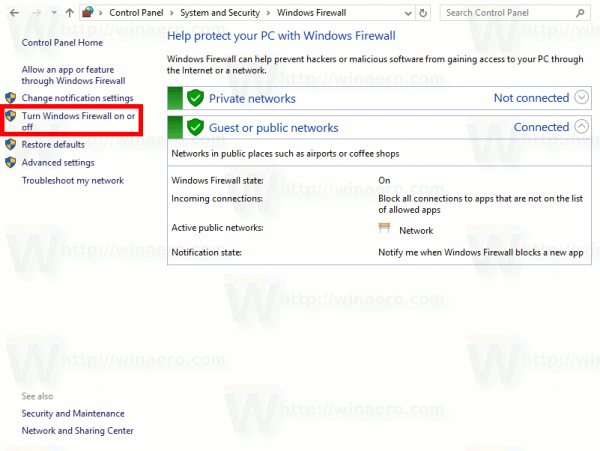
- There, select the option Turn off Windows Firewall for every desired network type.
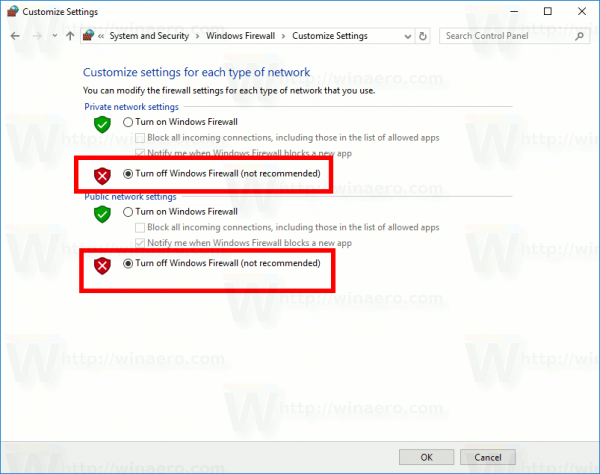
To enable it later, you can use the same Control Panel applet and set the option Turn on Windows Firewall.
You can disable Windows Firewall in Command Prompt.
Finally, there are a number of console commands which you can use to disable Windows Firewall in Windows 10.
In an elevated command prompt, type one of the commands below.
Disable Windows Firewall for all network types (profiles)
netsh advfirewall set allprofiles state off
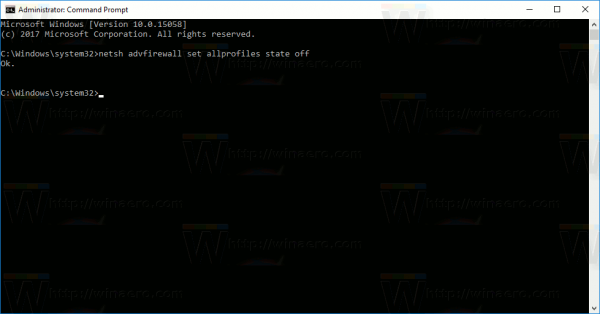
Disable Windows Firewall for the active profile only:
netsh advfirewall set currentprofile state off
Disable Windows Firewall for the domain profile:
netsh advfirewall set domainprofile state off
Disable Windows Firewall for the private profile:
netsh advfirewall set privateprofile state off
Disable Windows Firewall for the public profile:
netsh advfirewall set publicprofile state off
To revert any of the commands above and re-enable Windows Firewall, replace the "off" portion at the end of the command with "on", e.g.
netsh advfirewall set allprofiles state off
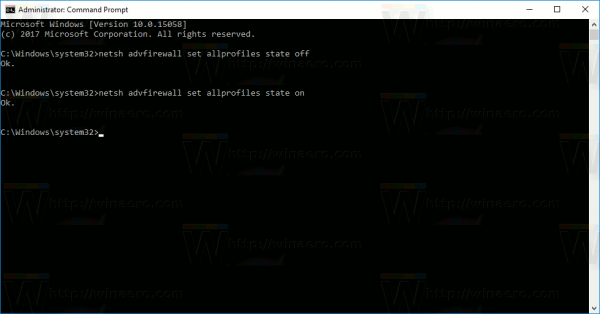
You can disable Windows Firewall in PowerShell
The next set of commands are available in Windows PowerShell. If you are using PowerShell frequently, you can use them instead of the list above.
Open a new elevated PowerShell instance and type the following commands:
Disable Windows Firewall for all profiles:
Set-NetFirewallProfile -Enabled False
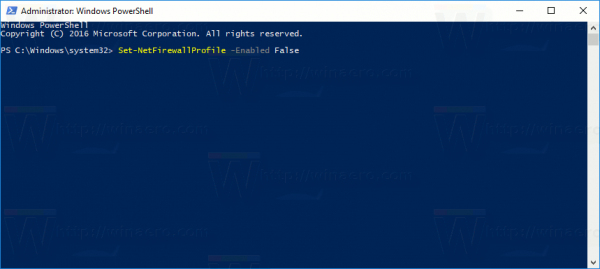
Disable Windows Firewall for the Domain profile.
Set-NetFirewallProfile -Profile Domain -Enabled False
Disable Windows Firewall for the Private network profile only.
Set-NetFirewallProfile -Profile Private -Enabled False
Disable Windows Firewall for the public profile.
Set-NetFirewallProfile -Profile Public -Enabled False
To revert any of the commands above, replace "False" with "True" at the end of the command. For example,
Set-NetFirewallProfile -Enabled True
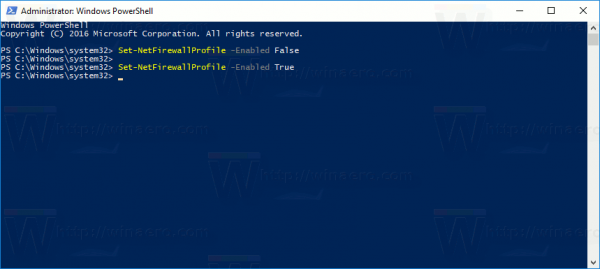
That's it.
Support us
Winaero greatly relies on your support. You can help the site keep bringing you interesting and useful content and software by using these options:
